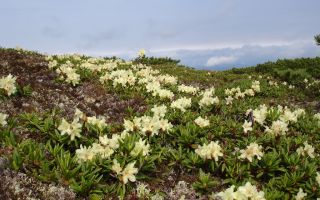Content
The herb kashkara, or golden rhododendron, is used both externally and internally. But you can drink decoctions, infusions only on the recommendation of a doctor. First, you need to find out the medicinal properties and contraindications of kashkara. It is important to follow the recommendations for admission, to avoid overdose, since the shrub is a poisonous plant.
What does kashkara look like and where does it grow?
Golden rhododendron belongs to the Heather family. This is a low-growing evergreen shrub. The plant got its name due to the characteristic color of the flowers.
Kashkara is widespread in the mountainous regions of the Far East and Siberia. There are shrubs in Transbaikalia, Baikal, Amur, Primorye, Altai, Kamchatka, Sakhalin, Kuril Islands, and the eastern part of Yakutia. Kashkara belongs to the plants of temperate and cold-temperate mountain flora of Eurasia.
The golden rhododendron grows in the alpine, subalpine and taiga mountain belts. Kashkara can be seen on the slopes, among the stony placers, dwarf cedar, kurumniks. In the high-mountain tundra, shrubs form thickets.
In accordance with the description, golden rhododendron is a small shrub 30-60 cm high, in rare cases it grows up to 1 m. The branches are pressed against the soil and rise, they are painted in dark brown color. Young shoots are pubescent.
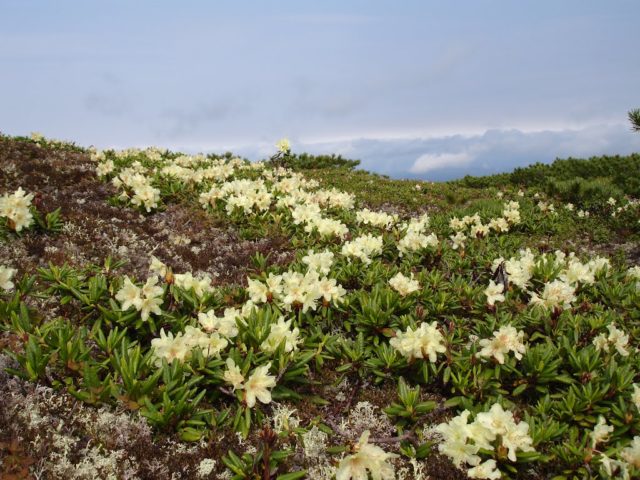
The leaves are evergreen, dense, slightly curled. Their length varies from 2.5 to 8, width is from 1 to 2.5 cm. The upper part of the kashkara leaves is dark green, the lower one is much paler.
The shrub begins to bloom in May or June. Its flowers are golden yellow, 4-5 cm in diameter and 2.5-3 cm long. They are collected in umbellate inflorescences at the ends of the shoots, 3-10 pieces each. In shape, the buds resemble a wide funnel.
Chemical composition
For medicinal purposes, large kashkara leaves and flowers are used. The most valuable raw material is considered not from young shrubs, but from plants that are at least 2-3 years old. By this age, the required amount of nutrients accumulates in the leaves of rhododendron.
The composition of kashkara contains the following components:
- phytoncides;
- tannins;
- essential oils;
- organic acids;
- flavonoids;
- resin;
- rutin;
- vitamin C;
- triterpene saponins.
Chemical analysis showed that the leaves contain glycosides rhododendrin, andromedotoxin, arbutin, ericolin.
The healing properties of Kashkara herb
Golden rhododendron is used in folk medicine. When prescribing decoctions and infusions from kashkara, the medicinal properties of this plant are taken into account. It has the following effects on the body:
- tonic;
- pain reliever;
- sedative;
- diaphoretic;
- bactericidal;
- diuretic;
- local irritating.
The prepared means are recommended to be used externally and internally. With their help, you can get rid of skin diseases, reduce the severity of inflammatory processes.
Use the herb kashkara as a diuretic. Medicinal compositions based on it help eliminate edema, lower blood pressure. They are recommended to be taken by patients with kidney stones, bladder.
The use of kashkara in traditional medicine
External agents have a detrimental effect on streptococci, staphylococci. Compresses, rinsing, lotions from kashkar are recommended to be done in order to destroy pathogenic microflora.
Has a golden rhododendron and irritant effect. Due to this property, compresses and lotions from kashkara are recommended for radiculitis, rheumatism, gout and other diseases of the organs of the musculoskeletal system. Use infusions for rinsing the mouth. They destroy bacteria, normalize the condition with stomatitis, gingivitis, periodontitis.
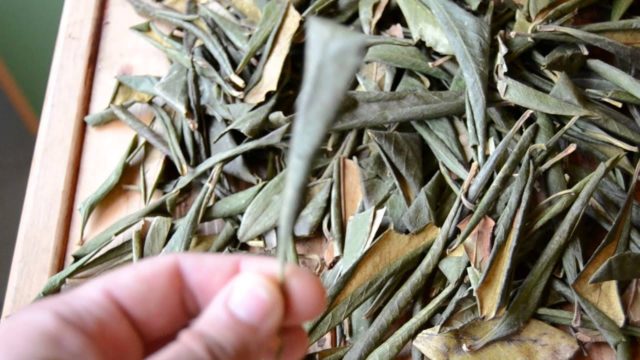
Healers advise women to do douching with kashkara as part of complex therapy. They are prescribed for inflammatory diseases, cervical erosion.
It is possible to ingest funds made on the basis of golden rhododendron after consultation with a doctor. When used, it has a pronounced diuretic effect, helps to eliminate edema. Under the action of active components, the work of the cardiovascular system is normalized, blood pressure decreases, and shortness of breath decreases.
Infusions
To prepare the infusion, you will need dried kashkara leaves. They are crushed and poured with boiling water. For 200-250 ml of water, 1 tsp is required. raw materials. It is better to prepare the infusion in a thermos or container wrapped in a towel. The herb is brewed for 20 minutes and filtered.
It is advised to take the remedy for people who have:
- high blood pressure;
- the work of the organs of the cardiovascular system is disrupted;
- swelling;
- urolithiasis disease;
- gastrointestinal diseases;
- nerves;
- insomnia;
- migraine;
- rheumatism;
- gout.
Drinking infusion of kashkara is necessary 2-3 times a day for 1 tbsp. l. It is advisable to warm it up before use. The recommended course of treatment is 1 week. It cannot be renewed without consulting a doctor.
For the treatment of infectious and inflammatory diseases, you can make a more concentrated infusion. It is prepared from 1 tbsp. l. dry crushed leaves and 200 ml of boiling water. It is necessary to insist the liquid in a thermos or a tightly wrapped container for at least 1 hour. Take the prepared extract should be 1 tsp. 4 times a day.
Decoctions
To prepare the broth, you will need 1 tbsp. l. dried and crushed leaves of golden rhododendron and 0.5 liters of water. Pour cold water over the plant and bring to a boil over low heat. You need to cook it for 10 minutes.
The prepared broth has a bactericidal effect. Healers recommend taking it for tuberculosis. The filtered liquid should be drunk 1 tsp. three times a day. Such treatment can be started only after consulting a doctor.
Also, the broth is used as an external agent for skin diseases. Lotions, compresses are made from it. It is recommended to rinse the mouth with a decoction of kashkara for stomatitis, periodontitis and throat with pharyngitis, sore throat.
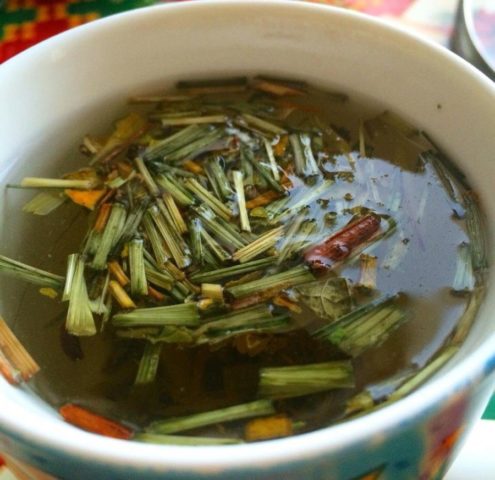
Tinctures
On the basis of 40% alcohol from kashkara, you can make a tincture. For its preparation, crushed leaves are mixed with vodka in a ratio of 1:10. For 2 tsp. raw materials will need about 100 ml of alcoholic beverage.The tincture is prepared in a glass container in a dark place for a week.
The resulting product must be filtered before taking. Use the tincture as a diuretic, diaphoretic. It is also recommended for colds, gastrointestinal diseases, hypertension, rheumatism and other problems of the musculoskeletal system. The tool has a positive effect on the work of the heart and blood vessels. It promotes blood thinning.
For medicinal purposes, kashkara tincture should be taken 25 drops after meals. Some recommend ½ tsp. dissolve the prepared product in 100 ml of water and drink the resulting liquid three times a day after meals.
Contraindications
Some people cannot take infusions, decoctions and tinctures of kashkar. Therefore, before using them, you need to familiarize yourself with the medicinal properties of golden rhododendron and contraindications to the use of products made on the basis of the leaves of this shrub.
Refuse to use should be patients who:
- renal failure;
- hypotension;
- chronic liver disease;
- individual intolerance.
It is important to follow the recommended dosage. If, after taking, signs of intoxication appear, then you need to call an ambulance. You need to pay attention to the following symptoms: severe headache, nausea, shortness of breath, heart rhythm disturbances, respiratory depression, a feeling of intoxication.
Collection and preparation of grass
For the preparation of medicinal products from kashkara, plant leaves are mainly used. But medicinal substances are also found in flowers.
It is advisable to pick off the shrubs during the flowering period. At this time, the plant has the maximum concentration of medicinal substances. For collection, you should choose a kashkara at least 2 years old.
The collected raw materials are dried in the fresh air in shaded places: under awnings, in the attics of houses. Electric ovens and special dryers are also suitable for this purpose. Lay out leaves with flowers in 1 layer. Stir and turn them periodically to dry evenly.
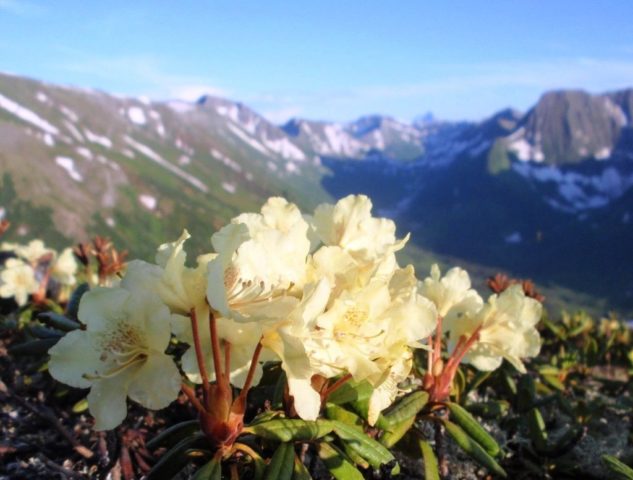
You can use the prepared raw materials for 3 years. It should be stored in linen bags, paper, cardboard boxes in well-ventilated rooms at a temperature not exceeding + 25 ° C.
Conclusion
The medicinal properties and contraindications of kashkara should be assessed before using the remedies prepared from this plant. The shrub is poisonous. But when you follow the recommendations for the preparation of decoctions, infusions and adherence to the dosage regimen, you can take them. They have a tonic, bactericidal, anti-inflammatory and diuretic effect on the body.

